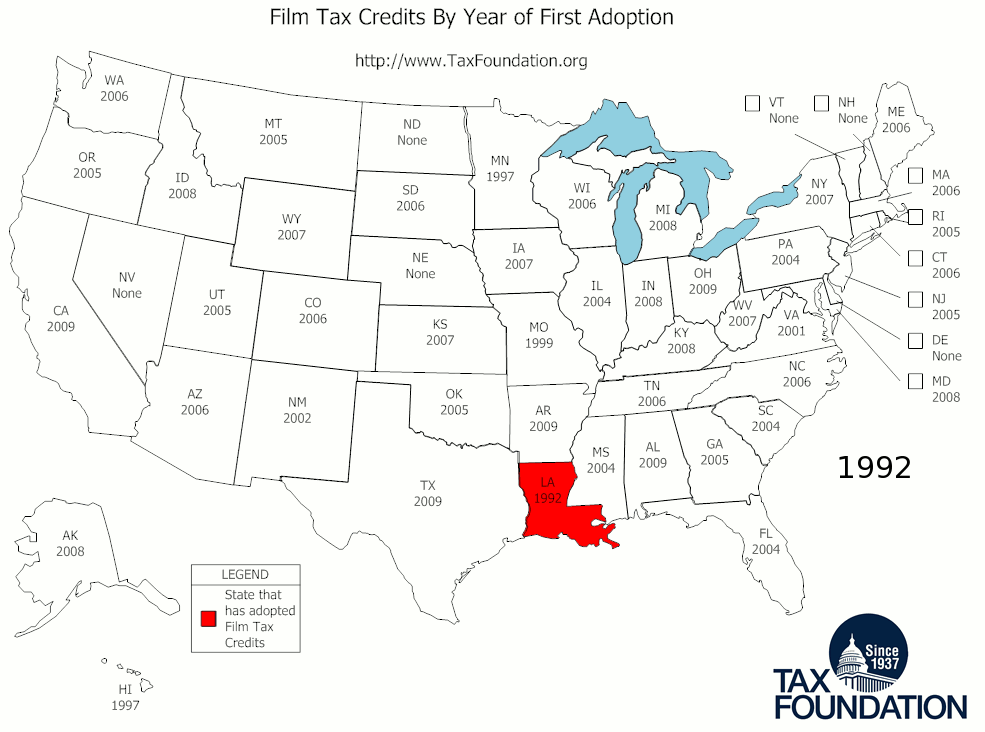In 2010, for the first time since states began directly subsidizing film productions through their taxA tax is a mandatory payment or charge collected by local, state, and national governments from individuals or businesses to cover the costs of general government services, goods, and activities. codes, fewer states will offer film tax credits at the end of the year than at the beginning. Reports BusinessWeek:
Kansas and New Jersey have suspended their tax credits. Rhode Island has capped subsidies at $15 million annually, and Wisconsin’s are set at a measly $500,000 a year. Arizona’s program is set to expire on Dec. 31. Larry Brownell, head of the Association of Film Commissioners International, which represents 41 of the 42 states offering credits, predicts half the states will shelve their programs within a decade.
In 1992, Louisiana enacted a tax creditA tax credit is a provision that reduces a taxpayer’s final tax bill, dollar-for-dollar. A tax credit differs from deductions and exemptions, which reduce taxable income rather than the taxpayer’s tax bill directly. for filmmakers who lost money on films with “substantial Louisiana content.” Other states jumped on the bandwagon, and as more states added credits, existing states made theirs sweeter. By 2009, 44 states operated government incentive programs for film production: 28 states offered tax credits, 17 states offered cash rebates, and 3 states outright grants. Of the tax credit states, 14 states make them transferable and 15 states make them refundable, greatly increasing their value and making it very unlikely they pay for themselves.
Michigan and Louisiana have proven the most willing to pour their treasure into filmmaker subsidies, making it difficult to challenge their supremacy. (Our back-of-the-envelope calculation is that states have paid about $3.5 billion in incentives to filmmakers since 2005.) California’s entry into the film tax credit world last year will make it even harder for other states to attract productions. Whatever “rents” there were for early-adopter states to collect in film production, they’ve now dissipated. Now, for most states, it’s just an expensive program for well-off and transient production companies that costs more money and jobs than it creates.
Supporters of film tax credits universally say that lowering tax burdens results on the film industry results in a huge burst of economic activity across a range of local businesses. If that point is conceded, why stop at the film industry? Many industries and professions have higher multipliers than film production (PDF), and high tax burdens on business are certainly a problem we identify in many states. Why not try a broad-based tax cut: lowering the overall tax burden, which will make a state more attractive for businesses and will have positive effects for the broader economy.
Our overall report on film tax credits is here.
Share this article